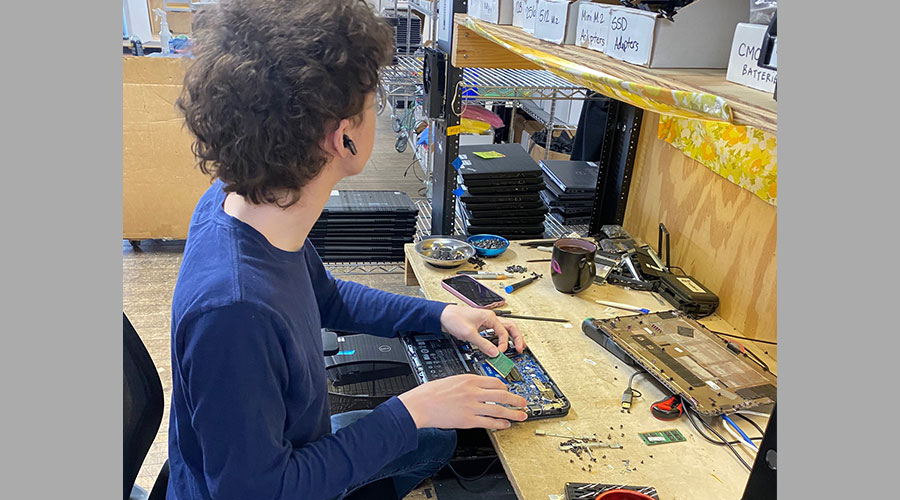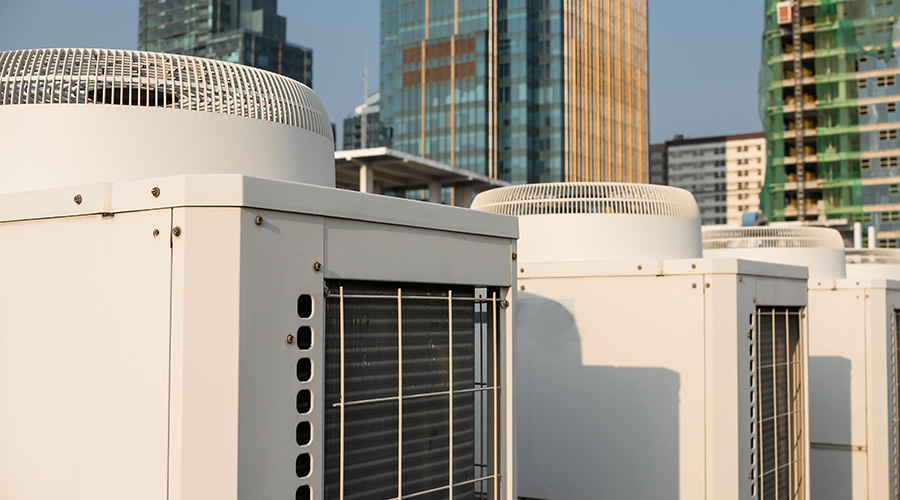 Research from The Mayo Clinic suggests that sitting for more than 8 hours per day, coupled with no exercise, has similar mortality risks to smoking and obesity.David Lauer
Research from The Mayo Clinic suggests that sitting for more than 8 hours per day, coupled with no exercise, has similar mortality risks to smoking and obesity.David LauerHow Design Should Encourage Movement, Improve Health and Wellness
Sitting really is the new smoking, so encouraging occupants to move is important. Here are some design and operational tips to do just that.
The amount of time spent inside, due to traditional work styles, is often in a seated position. While providing opportunities for sitting is essential for health, the sedentary nature of a typical workday does not lend itself well to a flourishing work environment.
The inactive nature of most North Americans has become such commonplace that sitting has often been called “the new smoking.” Research from The Mayo Clinic suggests that sitting for more than 8 hours per day, coupled with no exercise, has similar mortality risks to smoking and obesity.
Musculoskeletal issues are the number one reason that most office workers miss work in Canada and account for 34 percent of total lost workdays in the United States. Ergonomic furniture can help, as can providing and encouraging opportunities for more movement throughout the day.
A variety of strategies, ranging from low to high effort, can help promote movement and improve ergonomics in the workplace. Activated lobby areas that provide healthy coffee, tea, and food options will often encourage building occupants to move more throughout the day. These spaces also promote socialization, contributing to occupants’ mental health and wellbeing by combating workplace loneliness. Centralized kitchens or kitchenettes in each tenant space also foster employee interactions. Removing trash bins from individual workspaces can also encourage employees to move around. Artwork, natural images, and colors draw people to walk more along various circulation pathways.
Fun stairwell design features — music, gamification, and appealing colors — encourage occupants to take the stairs. Revolving artwork in stairwells offers a fresh space that draws traffic and keeps employees in motion. The benefits of taking the stairs are significant, from increased aerobic fitness and bone density to reducing weight by up to six pounds per year. Ideally, central stairs that are easily visible, even through glazed walls, can be a stronger reminder to occupants. Positive messaging around elevators points people to the stairs while acknowledging that people have varying physiological needs and some may not be able to use the stairs.

(Fun design features encourage occupants to take the stairs. For example, revolving artwork in stairwells offers a fresh space that draws traffic and keeps employees in motion. Photo credit: Laughing Dog)
There are various active workstation features that can be included in the office. For example, sit-stand desks can lower obesity rates and improve cardiovascular and musculoskeletal health. Our ball and socket joints, such as hips and shoulders, are not typically used in their full range of motion when sitting in a chair all day, and sit-stand desks can allow for a greater range of motion. Dynamic workstations such as treadmill and cycling desks are another option. Allocating one or two of these as a hot desk option in an office could be a good way to increase movement.
Amenities for active transportation are another major wellness opportunity that building owners and facility managers can include in base building design. More and more office workers are choosing to either fully or partially use active transportation options as part of their commute to work, so providing bike storage and equipment and showers and change rooms make it that much easier for staff. This includes people who commute year-round, regardless of the season or weather. Some winter cities promote cycling to such a degree that the paths are maintained on a daily basis.
With proper planning, design, and operations, health and wellbeing for occupants can be cost effective. WELL and Fitwel are specialized certifications catering to occupant health and wellbeing and can be the cumulative results of all the strategies employed. But as a starter kit, steps like those described above can lead to an enhanced occupant experience which helps boost productivity, aids in talent retention, and provides a solid return on investment.
Jude Chakraborty (jude.chakraborty@stantec.com) is an associate and senior sustainability consultant for Stantec, one of the world’s largest global design firms. Kaitlyn Gillis (kaitlyn.gillis@stantec.com) is an associate and wellbeing/sustainability specialist for the global firm, which is a sustainability leader in its operations and project work.
Related Topics:














